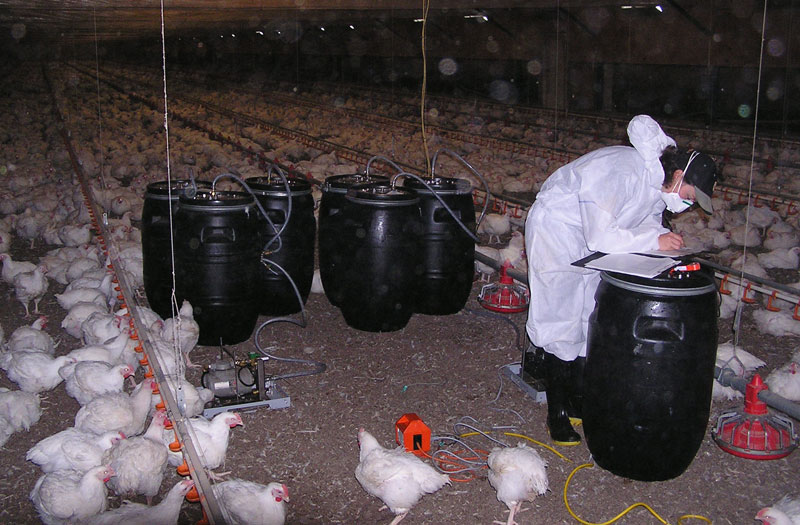Odour Emissions

Fans used in a tunnel ventilated shed
Odour emissions
Odour emissions from tunnel ventilated poultry housing
In Australia, factors such as local planning processes, urban encroachment into rural areas and intensification of the poultry industry have increased the potential for odour and dust nuisance. At present, accurate estimates of odour emissions from mechanically ventilated poultry housing systems do not exist for Australian conditions, leaving the poultry industry vulnerable to unsubstantiated criticism.
Odour emission measurements undertaken in Australia
Odour emission rate measurements undertaken in Australia in the past have largely been carried out in an ad-hoc fashion using a variety of sample collection and assessment techniques. Unfortunately, many of these measurements were not performed to a modern standard and therefore cannot be compared with modern odour emission rate data. Furthermore, many of the odour measurements undertaken at poultry farms were conducted on naturally ventilated sheds that are no longer representative of modern, best-practice poultry farming. In recent times, the Australian poultry industry has made a concerted effort to convert from naturally ventilated housing to automated, highly intensive, tunnel ventilated housing systems. This shift in production system has presumably corresponded with a shift in odour generation and emission dynamics.

Odour sampling in a tunnel ventilated broiler shed
Differences between Australia and overseas
In addition to the lack of Australian odour emission rates measurements, odour emission rates measured overseas are not generally applicable to Australian poultry production due to different housing designs/management, feed formulations, climate, litter (or bedding) materials, and litter management. Also, odour emission rates may not be comparable between countries due to the use of different olfactometry standards. These issues highlight the need for odour emission rates to be measured for modern, best-practice poultry farming under Australian conditions using standardised odour and dust sampling methods and equipment. Accordingly, the Australian poultry industry have made a significant investment in research to obtain accurate estimates of odour, dust and volatile chemical emission rates from typical poultry housing systems.
Wet litter and odour generation
Litter moisture content has been implicated as an influential factor for odour generation in meat chicken production. Some data suggests that slightly excessive moisture content can result in exponential increases in odour generation. In practical terms, this might mean that a very small area of excessively moist litter within a shed may contribute to a significant proportion of the entire shed odour emissions. As a result, the regulation/control of litter moisture content has been incorporated into national environmental best-practice guides for the meat chicken industry.


